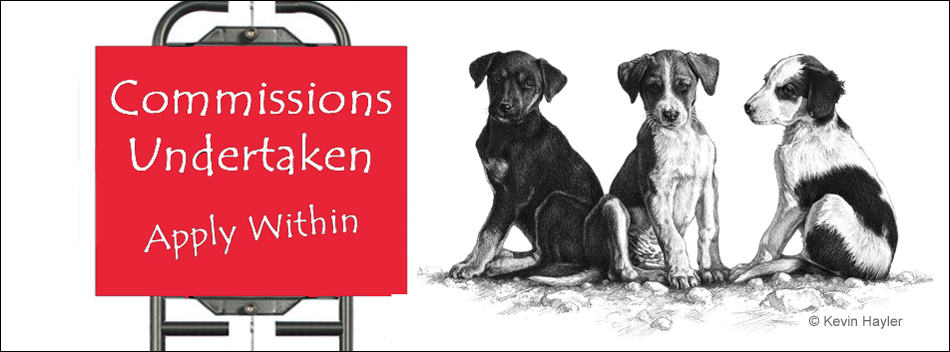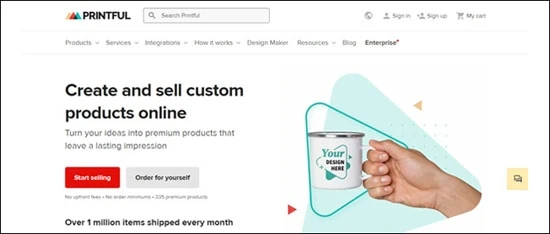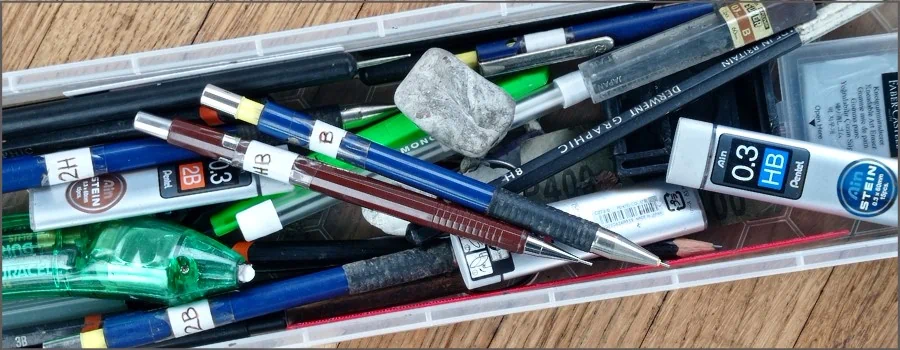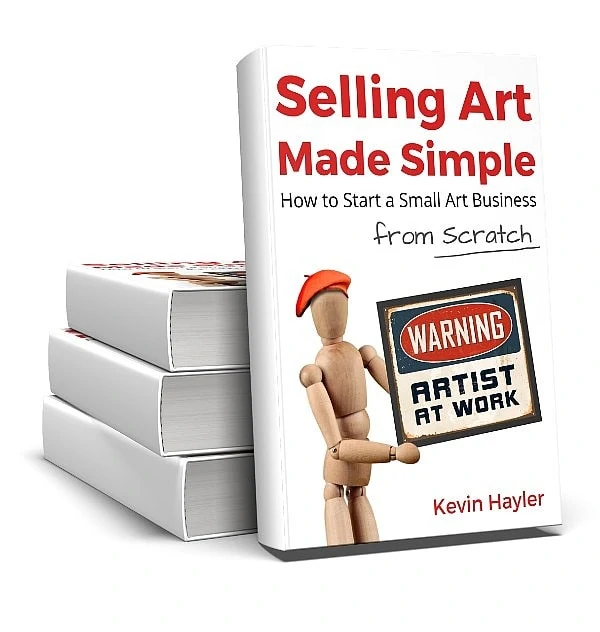Kevin Hayler: Professional Wildlife artist, author, and traveler.
Have you been struggling to find new clients for your work? If so, this blog post is for you! I will tell you how to get art commissions by explaining where and how artists can find customers.
The best way to get art commissions easily is to display your art in public from a market booth, in workplaces, staff rooms, and canteens, and collect the orders. Join forums on Facebook, Reddit, and Quora and network passively.
There’s a lot to learn and this is a long guide. It’s aimed at beginners but applies to any artist wishing to find new customers.
Let’s run through your choices.
Disclaimer: When you buy something via my affiliate links I earn from qualifying purchases and sometimes earn a commission, at no extra cost to you. I am an Amazon Associate among others. I only recommend trusted sites.
How to Get Art Commissions for Beginners
This is the one area where your customers will come to you.
The easiest way to get art commissions, and attract potential customers is to display your artwork in a public place. That’s right, sit down in a busy public area and promote your services.
Have a comments book to gather testimonials and emails. Engage with the public and demonstrate your skills if possible. The public love to watch local artists.
Make sure you collect the details from everyone who makes an inquiry and follow your leads that evening. You’ll get orders if you are proactive.
If you sit down on a public street with plenty of passing trade you WILL get inquiries. In fact, if commission work is your preference there is no better way to advertise your services.
I can already hear the protests, ‘But you need a license to street trade!’ Yes, that’s true but only if you are taking money, not if you’re taking orders.
There’s nothing illegal about drumming up business by promoting yourself and besides, most people are happy to have local artists around. It’s interesting.
How to Find a Good Pitch and Get Art Commissions

When I first plonked myself down on a street I was so anxious not to upset anyone I introduced myself to all the local businesses and asked their permission!. No one minded, and I got to know my neighbors. It was good psychology.
That’s not to say that I’ve never had complaints and been asked to move, I have. It’s tended to be from struggling business owners who see everyone, and everything, as a threat to their own business, however irrationally. I’ve never had problems with chain stores.
If these things concern you, find out if any by-laws exist that prohibit self-promotion. It’s very unlikely.
Read these for more info:
First thing first, scout the area before you set up and choose your spot wisely. Don’t sit in front of a shop window or block any entrance, that would be asking for trouble. Set up in full view of passers-by but in a neutral space.
I hopped between empty shop units for a few years and did well. If the land outside was obviously private, I asked for temporary permission to set up on their frontage until the new tenants moved in. Most people are happy to help an artist and you should use that to your advantage.
How to Accept Commissioned Artwork and Avoid Problems
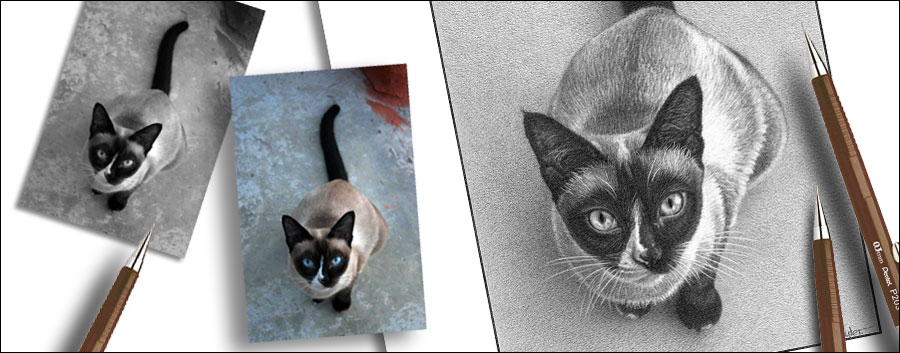
As a wildlife artist, most of my requests revolve around drawing animals which comes as no big surprise. Sadly for me, it’s seldom for wildlife.
Most people want their pets drawn or painted. That said, all manner of requests will come your way no matter what you display. People assume that you’ll do anything.
How to Get Pet Portrait Commissions
Keeping to the animal theme, it’s perfectly feasible to make a good living doing nothing but pet portraits, it’s a huge market.
According to the British charity PDSA, 49% of households in the U.K. have a pet, 25% of adults own a cat and 24% own a dog.
The figures are even higher in the U.S. I discovered that 68% of American households own a pet. Petfoodindustry.com quotes 50% of US homes own a dog and 39% own a cat.
That’s a serious market.
I go into this further: How to Draw Pet Portraits for Money
I’m approached by pet owners with photos all the time. The photographs, it must be said, are usually of very poor quality and these days, presented on a smartphone.
Regardless of the subject matter, you must accept art commissions with your eyes open.
How to Accept a Portrait Painting Commission
It may be tempting to accept every job that comes your way but a word of caution, are you taking on more than you can chew? You must be very clear about what you can and can’t do. The public can have unrealistic expectations.
Read these art commission tips:
- Is the photo reference good enough?
- Can you complete the work in a profitable time span?
- Can you draw or paint to the scale they request?
- Can you make changes to the image?
- Can you deliver the style and quality you have showcased?
It’s a minefield and in my experience, it’s far better to make it crystal clear from the start what you will and will not do. You must dictate the terms.
You should set clearly defined parameters that play to your strengths..
Ensure your potential clients accept and fully understand the following:
- The size of the work
- The medium(s) you’ll use
- The time it will take
- The price is per portrait
- Alterations you can and can’t do
- And demand a deposit.
It’s important that you make it crystal clear that drawing or painting two portraits on one sheet of paper is twice the amount of work and must be twice the price.
Some people cannot accept that simple logic. Don’t debate it or compromise. If paying for your time is a big issue don’t accept the job. The alarm bells should ring.
Those types of customers will often try to haggle for a further discount upon delivery and they are more trouble than they’re worth.
Always stick to your deal, fulfill the order to the letter, on time, and for the price agreed. Be reliable and it will pay off.. And don’t forget to put your contact information on the reverse of the picture.
If you screw up and it takes longer than you anticipated (it happens to everyone) keep your customer informed about the delay. Good communication is the key to a happy customer.
Keep to your quote, honor the asking price, and learn the lesson for the next time.
This is the best video I can find abouty accepting art commissions professionally.
How to Price Your Art Commissions
This is always the hardest advice to offer, we all work in different ways. Do you price by the hour and set an hourly rate, or by the size of the art?
You could start by researching what fellow artists are charging with similar work to your own. Don’t undersell yourself and if your prices are high don’t apologize for the price.
Be consistent and have a logical reason why there are price differences between one art piece and another. That means having the same price structure everywhere you’re selling your art.
If you’re selling art commissions online don’t charge more for it in person, if someone feels cheated it’s going to come back to haunt you. On the other hand, giving a special discount to a loyal customer will win you an admiring fan. It’s all psychology.
The easiest way to price art is by size, indeed some artists price their art by the square inch. Put simply, large work sells for much more money, regardless of the time and effort involved. People equate quantity as having as much, if not more value, than quality. It drives me mad.
If you need more help: Pricing Art For Beginners: Originals, Art Prints, and Formulas
Your time is the most important thing to consider, so you will have to calculate how long it usually takes to finish the final painting. If you’re inexperienced you’ll have to make a calculated guess.
Just be warned that things usually take a little bit longer than you think, and you should always overestimate the amount of time it will take. Be cautious when committing to a delivery date.
If you estimate that your commissioned piece will take one day to complete, allow for two days or more, and you will save yourself a lot of headaches.
If your natural art style leads you to create large works, milk it for all it’s worth. There is no such thing as an ethical profit.
Charge what the market will bear
If you create small art you will have to push the quality and get as much money as you can that way. Sadly it’s much harder to convince people at the lower end of the art market to pay higher prices for small artworks, even when the skill level is superb.
As I mentioned, many artists try to create their own pricing formula by pricing by the inch. I have never taken this approach. It’s far too blunt and clumsy. It doesn’t take into account the time involved
It’s important that I feel happy with anything I do. I want to feel valued and respected and in return, I will offer the very best professional work I can do. A fair exchange is no robbery and an ideal commission is when both parties are a good fit and happy with the deal.
The last thing you want is to accept a commission with a sinking feeling from the very start. You will end up resenting the work.
One other anomaly you might not have considered. Different mediums have different values.
It’s absolutely true, there is a scale of worth. It goes like this:
- Oils
- Acrylics
- Watercolor
- Pastel
- Pencil
You’ll get more money for a mediocre oil painting than you will for a fantastic pencil drawing. Again, your skill is secondary.
There is no one size fits all formula, if there was I would use it. In the end, it’s trial and error and you have to push the price up in increments until you find the sweet spot.
How to Upsell Your Art Commissions With Added Extras
On completion of your commissioned work, you have the opportunity to offer up-sells. If your custom painting or drawing, conforms to standard ready-made frame size you can easily offer a framing service.
It’s easy enough these days to offer merchandise via print-on-demand sites like Printful.com and drop-ship the products.
Create art that fits into these commercial sizes and save money:
| Frame Sizes | Mat Aperture |
| 6″ x 8″ | 6″ x 4″ |
| 7″ x 5″ | 3″ x 5″ |
| 7″ x 5″ | 6″ x 4″ |
| 10″ x 8″ | 3″ x 5″ |
| 10″ x 8″ | 6″ x 4″ |
| 10″ x 8″ | 7″ x 5″ |
| 10″ x 10″ | 8″ x 8″ |
| 10″ x 12″ | 6″ x 4″ |
| 10″ x 12″ | 6″ x 8″ |
| 10″ x 12″ | 7″ x 5″ |
| 10″ x 12″ | 10″ x 8″ |
| 11″ x 14″ | 10″ x 8″ |
| 12″ x 16″ | 8″ x 12″ |
| 24cm x 30cm | 6″ x 8″ |
| 30cm x 30cm | 8″ x 8″ |
| Frame Sizes | Mat Aperture |
| 12″ x 16″ | 8″ x 12″ |
| 12″ x 16″ | 8.5″ x 11″ |
| 12″ x 16″ | 9″ x 12″ |
| 16″ x 20″ | 8″ x 12″ |
| 16″ x 20″ | 10″ x 12″ |
| 16″ x 20″ | 11″ x 14″ |
| 16″ x 20″ | 12″ x 16″ |
| 30cm x 40cm | 8″ x 12″ |
| 30cm x 40cm | (A4) 297mm x 210mm |
| 40cm x 40cm | 8″ x 8″ |
| 40cm x 40cm | 10″ x 10″ |
| 40cm x 40cm | 30cm x 30cm |
| 40cm x 50cm | 11″ x 14″ |
| 40cm x 50cm | 30cm x 40cm |
| 20″ x 24“ | 16″ x 20″ |
| 24″ x 34″ | 20″ x 30″ |
You can offer prints, cards, t-shirts, cushion covers, phone cases, and the list goes on and on.
You should check it out take a look at this:
Don’t forget that you will need a hi-res scan so if that isn’t something you can do for yourself you will have to factor in the time and extra cost of getting a professional to do the job for you.
How to Use Flyers and Business Cards to Get Art Commission Work

The mistake most artists make when starting out is confusing an inquiry with genuine interest. If you want plenty of work you MUST follow-up
Do not give out your business card and expect people to get back to you. It rarely happens. Out of sight is out of mind and that brilliant idea of commissioning a work of art quickly dissolves.
A great way of retaining interest for longer is to offer a flyer. I print A5 leaflets and fold them in two like a greeting card. It gives you 4 mini pages to print some of your best work, add your details, and a short bio.
Adding your website address to your flyer is a double-edged sword. On the one hand, it gives you legitimacy and a means of keeping your prospect engaged, on the other it can encourage them to procrastinate and defer any decision.
I always give out my flyers and business card at the end of each encounter. I want to sell myself first and build a rapport. When someone asked for a card the first thing I say is ‘Sure, what were you thinking?’. That forces them to reveal their idea and gives you a foot in the door.
It is always better to take the customer’s details. If they decline, you know that they are half-hearted at best. It will save you time and energy pursuing a false lead.
Learn how to use cards effectively: Do Artists Need Business Cards? (Warning: They Can Kill Your Trade)
Don’t be tempted to hand out flyers to every Tom, Dick, and Harry passing by. It’s a waste of time and money. It’s better to stick to your target audience, the people who actually show some interest.
Swap details and send them a message that evening. Mention what a pleasure it was to meet them earlier in the day and have a large link to your website.
You should appeal to the owner’s emotional side. Don’t just send a price list, craft a sales pitch explaining why a beautiful original piece of art would be a unique possession or gift. In my case, it would be a celebration of their much-loved family pet.
Use this example as a guide and rewrite it to suit your needs.
Hi (NAME),
It was a pleasure meeting you this afternoon. Thanks for taking the time out of your busy day to stop and have a chat.
After you showed me the photo of your beautiful (cat/dog), I found these examples of some previous work and I thought you might be interested to see how they look. I can do the same thing for you.
It can be so hard to imagine how the final work of art will look but this will give you a good idea. It makes a big difference seeing them properly framed and presented, doesn’t it?
As you can see there’s so much more to the work than just accurately copying the photo. My mission is to bring out your pets personality and character. It’s important to get it right, and I take it seriously.
Your (cat/dog) is a cherished part of the family and this is going to be a lasting memory so it has to be done properly.
I have the skills needed to bring your wonderful (cat/dog) to life and hope we can work together on this interesting project in the very near future.
Please get back to me with any questions you might have. You can find my details below with a link to my website.
Good to meet you and I hope we talk soon.
Best Regards
Kevin
PS: Please send me as many reference photos as possible. The more the merrier.
Include emotional triggers using words like family, loyal, loving, and cherished, you should try to pull the heartstrings. Stress how your art will bring out their pets’ unique personality and character.
Remind them to send you the best photos they can find and make sure you have a payment method set up to accept the deposit. I have a portable credit card reader that has a small transaction fee, it’s about 2%. Alternatively, you can accept Paypal..
It’s important to stoke the fire while it’s hot.
This is an extract from my book where I go into much more detail. If you are serious about making money, check it out!
Alternative Places to Get Art Commissions Offline
As a self-employed artist, sometimes you have to think outside the box. There is a whole world of direct sales out there.
These are opportunities and captive markets that most artists completely ignore.
- Waiting Rooms. What do you do when you’re waiting at the doctors? – You read. It’s the same thing at the dentist or the vet. Give your portfolio to the staff and ask them to leave it out for the patients for a week. Chances are one of the staff will be a customer!
- Business Canteens are another possibility. You have to get through the insane security every business has these days but if you can get your portfolio into their common space you have a high chance of finding customers wanting something unique and special.
- Clubhouses. Don’t discount clubhouses if you specialize in their passions. Think about the boat, golf, and tennis clubs. Anywhere that people gather with a high disposable income is a potential goldmine.
- Staff Rooms. I made money by leaving portfolios in school staff rooms with my details and a contact form. It was a novelty for them. Think about it. It’s a talking point for bored teachers in their break time. A captive market.
- Nurseries If you need some cash and can turn your hand to drawing toddlers, who doesn’t want a picture of their little bundle of joy? Mum, Dad, and the grandparents do.
Once you start brainstorming the ideas come tumbling in. There are so many places to drum up work.
And don’t be afraid to leverage your friends and family. Get them to help you spread the word. Give them a folder to take to work. You will never have more enthusiastic ambassadors than a family member and they can help to kick-start your business.
Be Your Own Business Rep
Get your presentation portfolio together to present your art as a unique gift idea.
Go to town early in the morning when the shops start opening and visit them, one by one. Your target is the shop staff. They’ll be mainly women, and women are the best art buyers.
They’re not wealthy, but they will spend, especially at the start of the month when they get paid. If anyone is interested get their details if you can. Have a clipboard or order form handy. Otherwise, leave your contact details.
It’s wiser to leave a flyer with your images as a reminder, it’s better than a business card. Don’t scrimp on the quality.
Better still is to leave a portfolio. I used to leave folders in staff rooms and return a few days later to pick it up and collect any orders.
Only visit on a weekday and only if the staff are not busy. Skip the lunchtime. Staff are having lunch or are too busy.
If you put in the legwork you’ll get some trade and when you deliver their art you will almost certainly generate more business. That’s how it works.

Finding Art Commissions on Facebook Forums
Let’s face it most people are going to reach out online these days. There are art commission platforms that will claim to promote your work for you and take a slice of the action but most people will choose to use a social media platform.
Read this: 25 Platforms for Artists to Sell Their Art Online and Make Money
The first place to find an audience is Facebook. The key to finding customers is in selecting the right Facebook groups.
Open up your search bar and type in the word “art commissions” and what do you see?
Artists posting on groups with thousands of other wannabe artists. It’s dispiriting to look through them.
And who’s looking? Other artists mainly. Any group that’s aimed at artists is attracting the wrong crowd.
It’s better by far to target niche groups that are going to be interested in your subject.
If you paint horses why join a group of equestrian painters? You’ll be just one of the crowd waiting to be found, and possibly outshone.
Better by far to join a group of people who love horses and engage with them. It’s hands-on. You have to network, comment and chat. Be part of the scene and get recognized and liked.
Don’t be pushy with your art, think long term, just drop it into the conversations when it feels appropriate. Drop in an occasional image. Not more than 1 a week and do that in many groups. Some forums will respond better than others.
Some forums attract good people while others are less accommodating. You will find some members in some groups unpleasant. Don’t respond to the bait if they’re rude and critical, you have to let it go.
Don’t upset the moderators, keep them on your side.
Each group has its own rules, often with an approval process, and many are against selling, but there is usually some leeway for artists, they aren’t considered to be real business people. Just glorified hobbyists. Use that perception.
If there is an issue reach out and ask the moderator if it’s ok to link to your website and get a few commissions. You can even offer to cut a deal, why not? Plenty of forums are only set up by moderators wishing to sell their own products and services to a captive audience.
Putting your art out there is not going to get instant results, it’s a slow burn. You have to be patient, but the rewards are there. Once one person has your art in their hands they will start promoting you themselves. It’s a snowball effect.
Offer helpful tips and advice, compliment others, like pages, engage, answer questions, and network. When you start to build trust other members will respond and want to support you in return.

This post will also help: How Do Artists Find a Target Audience? The Best Tips!
Finding Art Commissions on Reddit Forums
Firstly, what is Reddit? Reddit is a giant online forum that can be defined as a social media website for sharing content. It’s an online community of users who help create discussions around specific topics and share different types of content such as images, videos, links, and text posts.
Subreddits are basically topic-specific boards where all the discussion and content are based around a particular topic.
There is a subreddit for every conceivable niche, hobby, and pastime, but don’t be misled, some subreddits have thousands of subscribers.
Make a list of all the most relevant subreddits to your niche. Find the most relevant subreddit for your type of work and get started by researching what posts are popular, make yourself familiar with any rules or regulations before posting anything.
Look for other artists advertising their work, that’s a good sign that the forum has potential customers. Take a look at their profile and see where they are posting their work and follow their lead.
Keep to the rules on Reddit. They tend to be stricter than Facebook. You don’t want to get kicked out of a lucrative subreddit or heaven forbid, the platform itself.
Your approach must be to offer more than you are trying to receive, don’t bombard the forum with your art, that’s going to be interpreted as spam, and get you banned.
Drop an image into the subreddit once per week at most. That should be fine in most forums. If you are active on 7 subreddits that’s an ad’ once a day.
If you have permission, include your contact details.
Just like Facebook, some forums are better than others, some will fail to attract any interest, and some will attract negative comments. Ignore them and try your luck elsewhere.
Try the Artstore subreddit. It allows links and encourages commissions. There are no referral fees.
Hopefully, one of your posts will get lucky and go viral. Your post can leap out of obscurity and gain a lot of followers that way. Reddit can be a valuable tool.
As your popularity increases, your posts will get more eyeballs and this will help you get the attention of people looking to commission artists.
If they contact you, be professional and answer all inquiries politely and professionally. Take time to reply as this can lead to another opportunity in the future.
Using Quora to Market Your Art Business
Quora is very similar to Reddit but there’s more leeway when it comes to self-promotion. You must follow all the rules but when you answer a question it is permissible to link your reader to your website for more information.
The emphasis should be to help and express your authority on the subject.
If you see a question appear at the top of a search result on Google, answer it with the best answer you can. It’s an easy way to get to the top of search rankings automatically.
You can see how popular a subject is by the views and likes of the top answer. In my experience, art gets low views for most topics, but when they do take off it can go viral instantly.
Sign up and state your preferred subjects and Quora will annoy you with suggested questions on topic. They are mostly garbage with the occasional question worth answering.
It’s best to be the first to answer a question if you can. If it does excite enough people your post will get the lion’s share of the traffic.
Get more viewers by posting images of your art, where appropriate.

Getting Art Commissions on Instagram
Instagram is the sister station of Facebook so in that sense don’t expect organic reach in the Zuckerberg empire.
For Instagram to work, you have to post every day using the best hashtags at the right time. Not only that, you must post top-quality images.
Not only is it a favorite platform for artists and photographers, it also attracts gallery owners, interior designers, and art collectors. Instagram is designed to share visuals and creatives love it.
Yet, Instagram is hit and miss. Some people do brilliantly well, while others do almost nothing. You need followers but it’s an ephemeral platform and quite shallow. Your work flashes onto the feed and is lost in the next. It has about 24 hours of life before it is lost in your feed forever.
This post will help: Social Media For Artists: The Best 13 Platforms for Creatives
I searched Domestika and found Dot Lung. She has almost 113,000 students! She probably knows a thing or two. Take a look and read her profile.
Top Tip: Find galleries and follow their customers. Think about it. A gallery owner will promote the most saleable paintings in their art gallery. Their followers will be potential clients or previous customers.
Be selective and follow promising accounts. Weed out other artists who might be doing the same as you.
To use Instagram for commissions you should build a following around your process and lifestyle, that way potential customers can get a sense of who you are and what they can expect.
Be consistent in the way that you post, don’t just do a burst for commissions and then disappear off the radar. It’s better to be there regularly with quality posts than sporadically with high-stakes content.
Intersperse your art posts with images of you at work, add video content and stories, and posts mentioning your commission details and services. Let people know if you are selling something and how to find you.
Unless you have a huge following you cannot link away from the platform from your feed. The only link permitted is on your profile.
To be effective you should use the services of a site like Linktree that connects that one link to several others. You can do the same thing by setting up a dedicated webpage on your website.
Getting Art Commissions From Your Own Website
Last, but by no means least is setting up your own website (I do hope you have one) and accepting commissions that way.
For this to work you need traffic so selecting the right keywords and being discovered through SEO (search engine optimization) is super important.
To succeed you will have to research keywords.
N.B If you haven’t got a website yet but intend to make one, I use Greengeeks Hosting and I’m happy. They are carbon neutral (it matters to me) and their customer service is great which is essential if you’re a beginner. Plus they have a cheap deal for the first year.
New sites must find the less popular search terms and target the low-hanging fruit. A new site takes time to rank so think ahead. You will not get instant results.
Your aim is to get to the top of page one for several search terms and maintain that position. There is far less traffic at the bottom of the first page and next to nothing on page two.
The percentage of visitors for each page ranking breaks down like this:
- 1st = 31.7%
- 2nd = 24.71%
- 3rd = 18.59%
- 4th = 13.60%
- 5th = 9.51%
- 6th – 6.23%
- 7th = 4.15%
- 8th = 3.12%
- 9th = 2.97%
- 10th = 3.09%
As you can see you will not get more than about one-third of the overall traffic. Your aim is to find a popular search question with low competition. Easier said than done.
Your site must be well laid out, fast to load, and easy to navigate. There are plenty of tutorials on Youtube to follow if you wish to set things up yourself.
It’s not as daunting as you think. I knew nothing and still managed to do it.
To be found you must add content, at least 30 blog posts about your services. It’s all about buyer intent. If you want customers for your pet portraits, for example, you would write articles covering every aspect of your subject.
You must keep the customer in mind. You don’t want to attract other artists, they are not your customers.
Here’s a tip, most people who want to commission a portrait of their pet have just lost it. Their pet has just died, so you can target your marketing efforts at remembering their beloved pet. It’s an emotional time for the owners and you can help them.
One last word about websites. They are the face of your business. Even if you don’t want to invest so much time into creating content, and it does take a lot of time, you must have all the most important details a customer needs to know, and an easy way to contact you.
Without SEO, your visitors will probably be former customers, and as everyone knows in retail, it’s your repeat customers that make you money. People who’ve already spent money with you are the best customers by far and you must look after them.
Frequently Asked Questions
Do Commissioned Artists Usually Take a Deposit?
As a first step, in the art commission process, you’re advised to follow best practices and insist on a 50% deposit upfront. You should always do this before accepting custom art commissions. Good clients will understand that you will be committing your time to this project.
In the real world you will have to judge each customer individually and calculate the level of trust there is between you. You should ask for a deposit, even if it’s only 10%, it’s a matter of good faith and a binding commitment. On completion of a successful commission, your customer can pay the remaining balance.
Online commissions are anonymous and you must ask for a higher deposit. So many things can go wrong.
How Do Artists Accept Payment?
I accept Paypal or credit cards. At my market stall, I will also accept cash, but that is becoming less frequent. I have my own portable card reader, and that suits me fine, and the customer can have a digital receipt.
Online, you can accept cards via Stripe or Paypal, although the latter also allows payment with cards.
When dealing with a customer directly, and most of my work is offline, I will write a receipt if it is required. I don’t try to hide cash, so I don’t care about the taxman.
Do Artists Need a Commission Contract?
A professional artist should provide a contract, legally clarifying the details of the commission. I have looked online and found a contract template pdf made by Squarespace. I do not know if it’s legally binding, I’m not a lawyer. It reads well and Squarespace is a big company. Make of that, as you will.
Personally, I have never asked anyone to sign a contract. My commissions have never been that formal. I’ve had so few problems with late, or non-payments that it’s never been an issue worth worrying about. I prefer a handshake anyway. Call me old school.
How to Find Art Commissions: Final Thoughts
Most younger artists assume that the art world is all online and opening an Etsy shop and using Instagram will attract new customers. If only it was that simple. Art is a very personal experience and it’s easier to sell in person. This is especially true with portrait paintings.
You must have an online presence because your admirers and collectors will want to stay in touch and keep up to date with your new projects.
Think of your website as an extension of your terrestrial business, not a substitute for it.
Don’t get too obsessed with marketing your services online, most of your customers are going to be people you’ve had real-life contact with, and probably local.
And then there are logistics, if you have to ship an original artwork halfway across the world it will cost a fortune, and could attract import duty. It’s a major undertaking. It’s bad enough at home.
It’s possible to build a whole career by making custom artwork, and commissions are the mainstays of many small art enterprises. The hardest part is getting the ball rolling.
It’s easy to think that you are better off pitching to the world but in reality, you’re a minnow in a vast ocean. It’s often better to be a bigger fish in a smaller pond.
These are the best ways I know to get started. If you have the right mindset and aptitude there is no reason why your hard work will not get you the rewards you deserve.
If you like the way I draw and want to try things for yourself, this is my basic kit
Seriously this will help. It’s everything I know from 20 years of selling directly to my customers. This stuff works.
If you found this article useful you may like these too:
- What Kind of Art Sells Best? The Secrets Revealed
- Is Your Art Good Enough to Sell? You Need to Know This…
- What Size Art Sells Best? Frames and Apertures – FREE Chart
- Tracing Art – Is It Good or Bad? When Is Tracing Cheating and Is It Ever OK?
- Can You Copy Art and Sell a Painting of a Painting? I Found Out
- How to Make Prints of Your Art – Printing Art Explained in Detail
- How to Get Paid For Drawing: 18 Ways to Make Money
- How to Scale Up a Drawing in 4 Easy Ways and Save Time
- What’s the Right Paper for Pencil Drawing? (How to Choose Wisely)
Plus find an ONLINE COURSE that suits you.
PIN IT AND SAVE IT
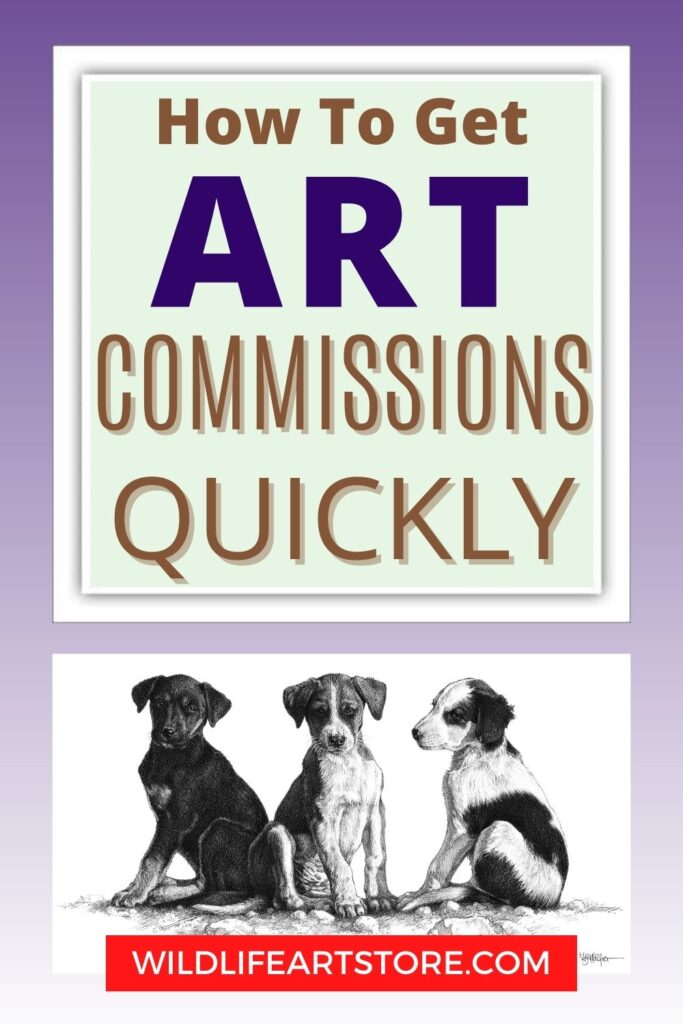

Hi, I’m Kevin Hayler
I’ve been selling my wildlife art and traveling the world for over 20 years, and if that sounds too good to be true, I’ve done it all without social media, art school, or galleries!
I can show you how to do it. You’ll find a wealth of info on my site, about selling art, drawing tips, lifestyle, reviews, travel, my portfolio, and more. Enjoy

